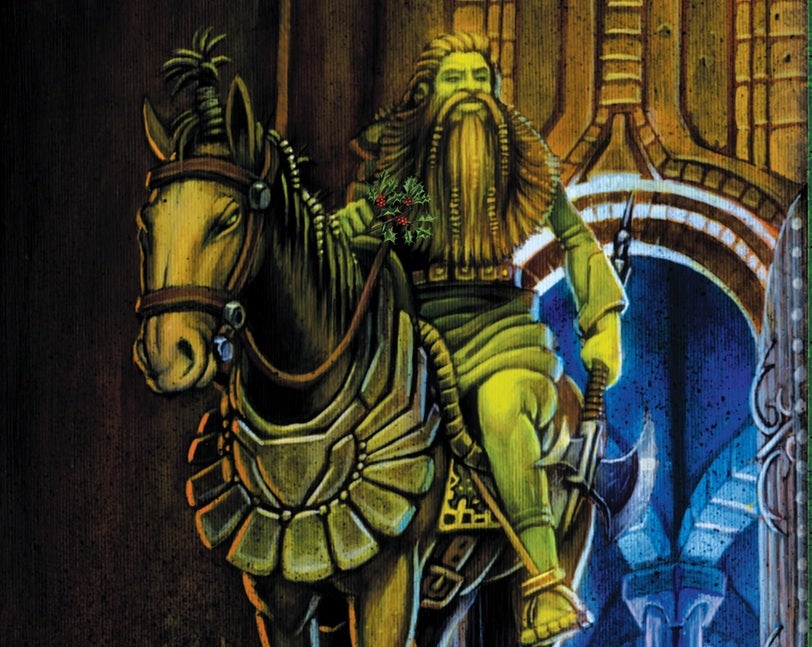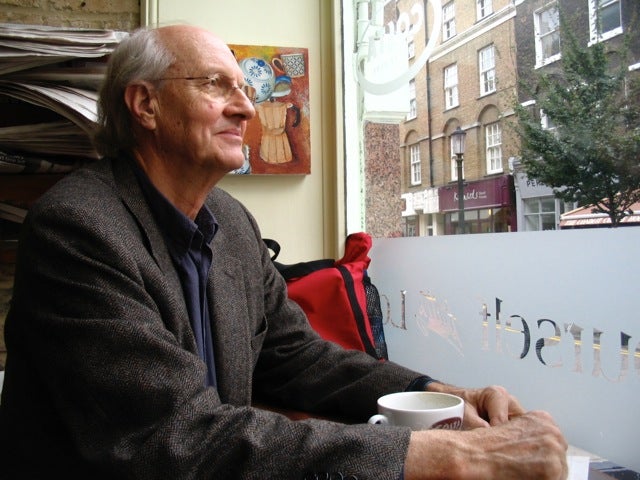
‘A Delightful Din All Down the Day’


John Ridland doesn’t count himself an avid fan of King Arthur, Guinevere and other literature related to the Knights of the Round Table. But the professor emeritus of English at UC Santa Barbara has a decidedly different opinion of the chivalric romance “Sir Gawain and the Green Knight.”
“It’s such a terrific story,” Ridland said of the poem written anonymously in Middle English by a contemporary of Chaucer. “The characters are completely recognizable as like ourselves, the plot takes some unexpected turns, and except for the heavy but not atypical Medieval misogyny that Gawain uses to assuage his guilt, it is thoroughly modern in its tone and texture.”
Ridland’s new, modern English translation, which covers every passage and work of the original, has been published by Able Muse Press.
In this tale of enchantment, faith, temptation and chivalry, Sir Gawain, a knight of King Arthur’s Round Table, accepts a dare from a mysterious Green Knight who appears at court and interrupts the Christmas celebration. The Knight invites any of Arthur’s crew to strike him with his own axe. In return, that knight will take a similar blow delivered by the Green Knight a year and a day hence. Gawain accepts the challenge and easily beheads the Green Knight who, in response, stands up, tucks his head under his arm, reminds Gawain of his commitment and rides away.
The story follows Gawain’s quest — and his struggles — to keep his end of the bargain. He is the epitome of chivalry and loyalty until a test involving Lady Bertilak, the wife of the Green Knight, calls his honor into question.
As Ridland writes in the introduction, “For modern non-Medievalists, I think the poem is largely about keeping cool –– playing it cool, even –– when things heat up: keeping a cool head in order to literally keep your head.
“In the end, the conflict between Gawain’s natural instinct to survive and his religious and courtly principles is just as relevant in today’s world of religious, moral, and patriotic confusions.”
Easily readable (as compared to the Middle English), Ridland’s version is written in modern meter, but retains the spirit of repetition and alliteration that marks the original poem’s technical brilliance.
“Instead of an awkward attempt at writing in retro accentual-alliterative meter, as most translators have done, I fell into a rhythm more natural for a contemporary reader — that of the ballad stanza,” Ridland explained. But he cited two distinct differences: First, he laid two ballad lines end to end, making a long line with seven beats; and second, he left them unrhymed.
“I could make a third point,” he went on. “Whereas those translators who have committed to the alliterative meter must follow a set of rules assuring that each line has sufficient alliterating and accented syllables, since I wasn’t required by the ballad rules underlying the lines to alliterate at all, I simply did what sounded right.
“Often enough, words from the original poem would contribute as is, and in fact, some readers have mistaken my meter for that old form because there is so much alliteration in it,” he continued. “But it is all ad lib.”
He added that when he found himself with the line, “A delightful din all down the day and dancing through the night,” he felt he was fully into the spirit of the original while not trying to replicate its form.
In taking on the gargantuan task — 2,530 lines and 101 stanzas — Ridland encountered challenges a-plenty, not the least of which is the vocabulary of the Northern Midlands, which required him to make extensive use of glossaries and notes in existing editions of the poem. He went through the text line by line, checking every word he didn’t recognize against a glossary. “Then I would make sense of it, moving from a clumsy ‘translationese’ sort of prose to the more rhythmic verse form,” he said.
“I can’t count how many complete run-throughs I gave the poem, but even between my first printed version — published by Juan Pascoe and Taller Mártin Pescador in 2013 with original illustrations by Artemio Rodríguez — and the present book published by Able Muse Press, there are dozens of small changes, often in the interest of meter but also to clarify the meaning.” The new translation also features radically different and more contemporary illustrations by British video artist Stephen Luke.



